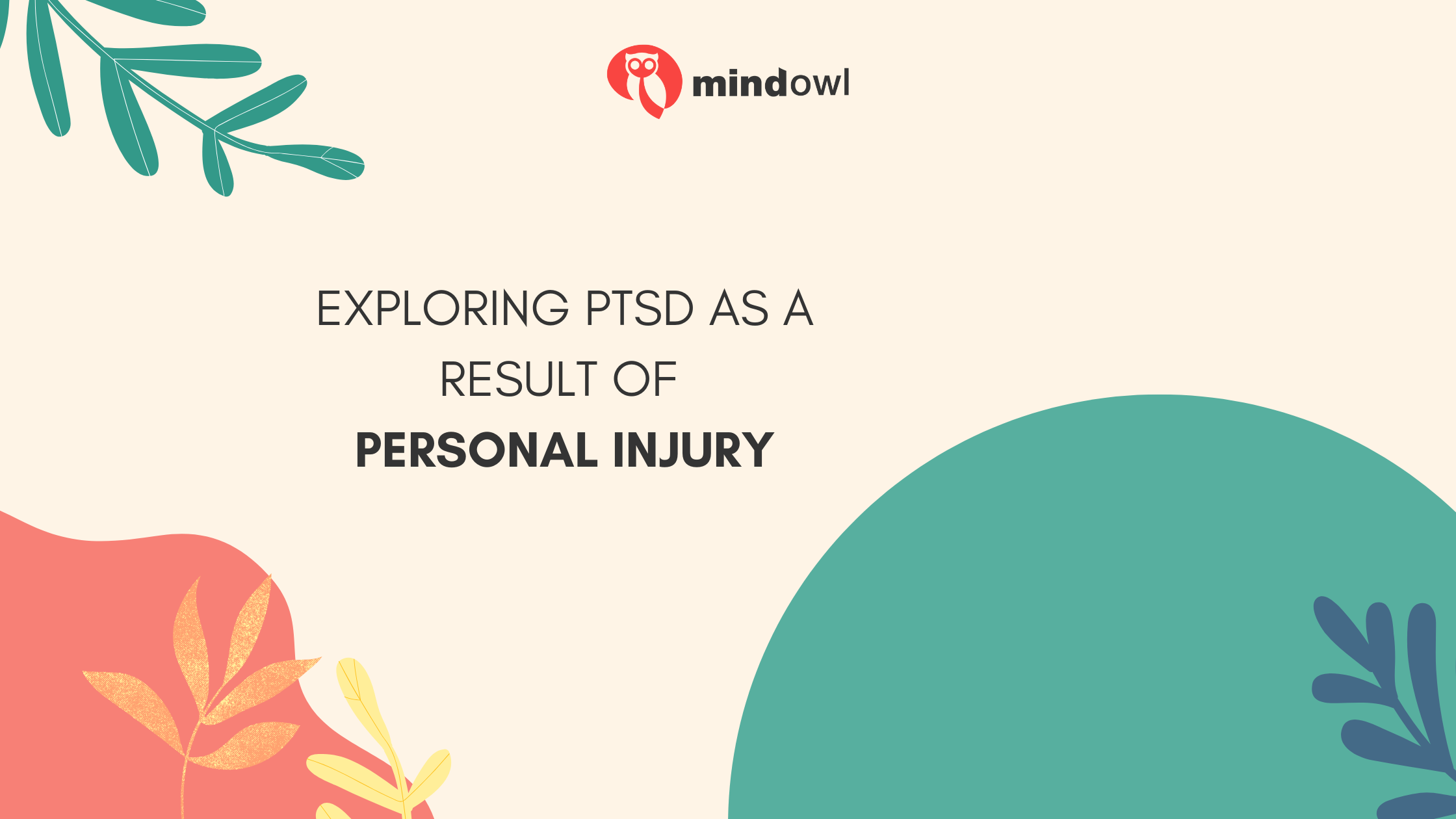
Getting hurt in an accident can mess with your head in ways most people never expect.
Sure, everyone talks about broken bones, cuts, and bruises. But what about the stuff you can’t see? The nightmares, the panic attacks, the way your heart races every time you hear screeching tires?
Here’s the thing:
Personal injury isn’t just about physical damage. The psychological impact can be just as devastating — and sometimes even more so.
Post-traumatic stress disorder following a personal injury is way more common than you might think. About 9 million Americans are affected by PTSD right now. A huge chunk of those cases stem from accidents and personal injuries.
Most people don’t realize they’re dealing with PTSD until months or even years after their accident. They think they’re just “not handling things well” or that they should “get over it already.”
That’s not how trauma works. When you’ve been through a serious personal injury, your brain literally changes how it processes fear and danger. Getting skilled representation for injury victims becomes crucial not just for physical recovery, but for understanding the full scope of personal injury and mental health impacts.
What You’ll Discover:
- The Hidden Connection Between Physical Injury and Mental Trauma
- Why Motor Vehicle Accidents Hit Different
- The Workplace Injury Connection
- The Ripple Effect on Daily Life
- Getting the Right Support
The Hidden Connection Between Physical Injury and Mental Trauma
Want to know something that’ll blow your mind?
Your brain doesn’t separate physical and emotional trauma the way you might expect. When you’re in a serious accident — whether it’s a car crash, workplace injury, or slip and fall — your nervous system goes into full-blown survival mode.
And sometimes, it just stays there.
Think about it this way. One minute you’re going about your normal day, feeling safe and in control. The next minute, BAM. Your world gets turned upside down in the most violent, unexpected way possible.
That kind of shock to your system doesn’t just heal when your bones do.
The trauma literally rewires your neural pathways. Your amygdala becomes hyperactive. Meanwhile, your prefrontal cortex goes offline.
This isn’t your fault. It’s not a sign of weakness. It’s basic biology.
Research shows that nearly 4% of the global population has experienced PTSD at some point in their lives. When we narrow it down to people who’ve suffered personal injuries? Those numbers skyrocket.
Why Motor Vehicle Accidents Hit Different
Let’s talk about the elephant in the room.
Car accidents are the leading cause of PTSD in civilian populations. Not war, not natural disasters — car crashes.
The statistics are pretty staggering when you dig into them. Motor vehicle accidents result in 39.2% of survivors developing PTSD. That’s almost 4 out of every 10 people who get into a serious crash.
But why are car accidents so particularly traumatic?
The suddenness and violence of the impact creates an overwhelming sensory experience. Your brain literally can’t process what’s happening fast enough. One second you’re driving along, the next second you’re experiencing forces that the human body was never designed to handle.
The loss of control is another massive factor. In a car crash, you’re completely powerless. You can’t fight back, you can’t run away, you can’t do anything except brace for impact.
Studies tracking accident survivors found that 27.5% developed PTSD at 6 months following their crash, with 24.3% still dealing with symptoms at the 12-month mark.
That’s hundreds of thousands of Americans every year.
The Workplace Injury Connection
Car crashes get all the attention, but workplace injuries can be just as traumatic.
Imagine this scenario: You’re operating machinery you’ve used safely for years. Suddenly, something goes wrong. In a split second, you’re facing serious injury or death.
The psychological impact hits on multiple levels. There’s the immediate trauma of the injury itself. But then there’s the violation of your sense of safety at work — a place where you spend 40+ hours every week.
Recent data shows that claims for mental health conditions now account for 10.5% of all serious workplace injury claims. That number has been climbing steadily year over year.
You often have to return to the exact same environment where your injury occurred. Unlike a car accident on a random road, workplace injuries happen in spaces you can’t easily avoid.
The Ripple Effect on Daily Life
PTSD from personal injury doesn’t just affect you during “triggering” moments.
It seeps into everything. Your sleep patterns, your relationships, your ability to concentrate at work. Things that used to feel automatic suddenly become sources of anxiety.
Many people develop what psychologists call “hypervigilance.” You’re constantly scanning for potential dangers, even in safe situations. Your nervous system is stuck in fight-or-flight mode, which is exhausting.
The symptoms show up in unexpected ways:
- Avoiding certain locations or activities
- Difficulty sleeping or staying asleep
- Irritability and anger outbursts
- Problems with memory and concentration
- Feeling emotionally numb or disconnected
One study following injury survivors found that 4.8% still had PTSD 12-15 years after their original accident. More than a decade later, they were still dealing with the psychological aftermath.
This isn’t about being “weak” or “not tough enough.” Trauma literally changes your brain chemistry. The good news? Those changes aren’t permanent if you get the right help.
Getting the Right Support
Understanding PTSD as a result of personal injury is the first step toward healing.
But here’s something most people don’t realize: PTSD from personal injury is often covered under personal injury claims. The mental health impacts are just as real and just as costly as physical injuries.
The key is recognizing the symptoms early and getting both psychological and legal support. Mental health treatment can be expensive, and you shouldn’t have to carry that financial burden.
Working with trauma-informed therapists who understand injury-related PTSD is crucial. Cognitive behavioral therapy and EMDR have shown good results for people dealing with accident trauma.
Connecting with support groups of other injury survivors can be incredibly validating. Sometimes talking to people who’ve been through similar experiences helps more than anything else.
Working with legal professionals who understand that personal injury isn’t just about medical bills and lost wages makes a difference. The psychological impacts can affect your earning capacity, relationships, and quality of life for years.
Recovery from PTSD following personal injury isn’t linear. Some days will be better than others. That’s normal, and it doesn’t mean you’re not making progress.
The intersection of personal injury and mental health is finally getting the attention it deserves. Research is advancing, treatment options are improving, and the legal system is catching up.
Wrapping Things Up
Personal injury and mental health are way more connected than most people realize.
The statistics don’t lie — hundreds of thousands of Americans develop PTSD every year following accidents and injuries. From car crashes that affect nearly 40% of survivors to workplace injuries, the mental health impacts are massive.
More people are talking about this stuff now. The stigma around mental health is breaking down, and the legal system is starting to recognize that psychological injuries deserve the same attention and compensation as physical ones.
If you’re dealing with symptoms after a personal injury, you’re not imagining things. You’re not weak. You’re having a normal response to an abnormal situation.
The path forward involves getting proper mental health support, understanding your legal rights, and giving yourself permission to heal at your own pace. Recovery is possible, but it starts with recognizing that what you’re going through is real and deserves to be taken seriously.
MindOwl Founder – My own struggles in life have led me to this path of understanding the human condition. I graduated with a bachelor’s degree in philosophy before completing a master’s degree in psychology at Regent’s University London. I then completed a postgraduate diploma in philosophical counselling before being trained in ACT (Acceptance and commitment therapy).
I’ve spent the last eight years studying the encounter of meditative practices with modern psychology.

